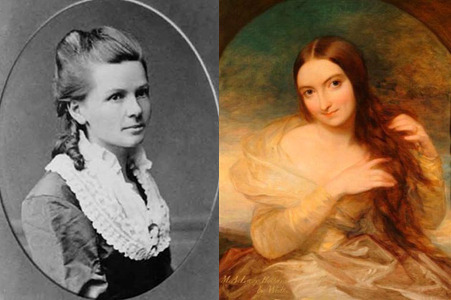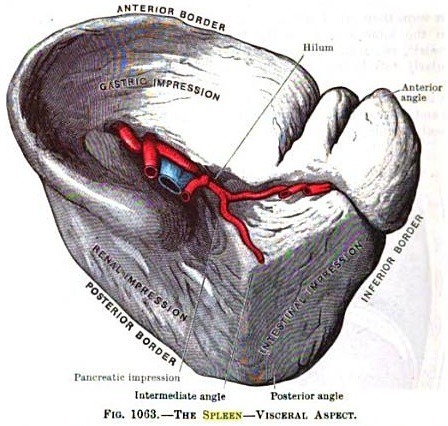Marc Abrahams's Blog, page 441
December 10, 2013
Press Release of the Week: “Reduced cognitive control in passionate lovers”
This week’s Press Release of the Week was released into the wild by Leiden University. Here are its headline and highlights:
Reduced cognitive control in passionate lovers
People who are in love are less able to focus and to perform tasks that require attention. Researcher Henk van Steenbergen [pictured here] concludes this, together with colleagues from Leiden University and the University of Maryland. The article has appeared in the journal Motivation and Emotion….
“When you have just become involved in a romantic relationship you’ll probably find it harder to focus on other things because you spend a large part of your cognitive resources on thinking of your beloved”, Van Steenbergen says. “For long-lasting love in a long-term relationship, on the other hand, it seems crucial to have proper cognitive control.” Over time, a balance between less and more cognitive control may be critical for a successful relationship….
Van Steenbergen emphasizes that the link between romantic love and cognitive control is a new area of research. “The reason why romantic love is associated with cognitive control is still unknown.”
The study is:
“Reduced cognitive control in passionate lovers,” Henk van Steenbergen, Sandra J. E. Langeslag, Guido P. H. Band, Bernhard Hommel, Motivation and Emotion, November 2013. The authors are at Leiden University and the University of Maryland. The authors write:
“We examined the link between passionate love and cognitive control in a sample of students who had recently become involved in a romantic relationship. Intensity of passionate love as measured by the Passionate Love Scale was shown to correlate with decreased individual efficiency in cognitive control as measured in Stroop and flanker task performance…. This study provides the first empirical evidence that passionate love in the early stages of romantic relationship is characterized by impaired cognitive control.”
 BONUS: Travis J. Carter, Ph.D., a postdoctoral researcher at the University of Chicago’s Booth School of Business, published an essay in Psychology Today with the headline “Despite What You Might Have Heard, Psychology is Science“ . Dr. Carter writes:
BONUS: Travis J. Carter, Ph.D., a postdoctoral researcher at the University of Chicago’s Booth School of Business, published an essay in Psychology Today with the headline “Despite What You Might Have Heard, Psychology is Science“ . Dr. Carter writes:
“We base our assertions on real data…. That’s what psychologists do: we collect a lot of data based on what we can see, make inferences, and then test those inferences to see if they hold up to scrutiny. This is the scientific method, and it’s the best way to find out what’s true.”

December 9, 2013
What, When, or How Do Students Complain?
There may be no truly satisfactory way to measure how much or how well students complain. But several teams of researchers have tried. One attempted to measure how students complain; another, how they intend to complain. A third team tried to gauge students’ attitudes to complaining. These are not easy to measure well, or consistently.
In 2010, David Hart and Nigel Coates, at Northumbria University’s Newcastle business school, published a study called International Student Complaint Behaviour: How Do East Asian Students Complain To Their University? in the Journal of Further and Higher Education.…
—So begins this month’s Improbable Research column in The Guardian.

An old, not-quite-dead question about sushi and death
Eating dead live fish has long inspired some people to some speculation about some incidents. This is further speculation about one of those incidents:
“Bad Sushi or Bad Merchant? The ‘Dead Fish Poisoning Incident’ of 1852,” Hiraku Shimoda [pictured here], Modern Asian Studies, vol. 35, no. 3, July 2001, pp 513-531. The author, then at Harvard University, begins to explain thus:
“The strange affair began innocuously enough. In the summer of 1851, Zeniya Gohei, a prominent merchant in Kaga han, started a land reclamation project on Kahoku inlet, which lies about three miles northwest of Kanazawa upon the Sea of Japan. Early in the eighth month of 1852, a large number of dead fish floated to the surface of the inlet near the construction site. Within weeks, there were reports of several local residents who apparently died from having eaten the dead fish. In the ensuing flurry of accusations, speculations, and indictments Gohei and his family members were deemed responsible and imprisoned….”
BONUS (unrelated, and/but thanks to investigator Vaughn Tan for bringing this to our attention: “Dead Sushi”:

“The Place of Golf in U.S. Imperialism” [study]
 What, if any, are the similarities, or if you prefer, the ‘correspondences’, between possible US imperialistic tendencies and golf? For answers, see : ‘The Place of Golf in U.S. Imperialism‘ in the Journal of Sport and Social Issues, 2002, 26: 331. It’s by C.L. Cole, who is Professor of Media and Cinema Studies; Professor of Communications; Professor of Gender & Women’s Studies; Professor in the Unit for Criticism & Interpretive Theory of Gender and Women’s Studies, African American Studies, Center for East Asian and Pacific Studies, and Sociology at the University of Illinois at Urbana-Champaign, US.
What, if any, are the similarities, or if you prefer, the ‘correspondences’, between possible US imperialistic tendencies and golf? For answers, see : ‘The Place of Golf in U.S. Imperialism‘ in the Journal of Sport and Social Issues, 2002, 26: 331. It’s by C.L. Cole, who is Professor of Media and Cinema Studies; Professor of Communications; Professor of Gender & Women’s Studies; Professor in the Unit for Criticism & Interpretive Theory of Gender and Women’s Studies, African American Studies, Center for East Asian and Pacific Studies, and Sociology at the University of Illinois at Urbana-Champaign, US.
In this case, the journal’s abstract about the article reveals very little, in the sense that there isn’t one – but Improbable can inform that in the paper itself, (which non-subscribers can purchase for US$25.00) the author points out that :
“The correspondences between the U.S. military and U.S.-dominated golf industry are actually quite remarkable.”
and ends :
“ […] the pretended ignorance of America’s sons allows them to exploit the violent global network of power with smiling innocence, imagining themselves as benevolent agents of freedom. One carries a machine gun. The other swings a golf club.”

December 8, 2013
What does the spleen do? [a music video by Harvard Medical School students]
Students at Harvard Medical School study body parts, among other things. Some of those students produced this video about the question “What does the spleen do?“:
The makers supply this info: A Parody of “The Fox” by Ylvis. This video was created for the 107th Annual Second Year Show by the Harvard Medical School and Harvard School of Dental Medicine (HMS/HSDM) class of 2016. Written by Will Lewis, Lydia Flier, Eddie Grom, and Ariana Metchik-Gaddis. Directed by Eddie Grom, Lydia Flier, and Ben Rome. Sound Production by Will Lewis. Filmed and Edited by Ben Rome. Choreography by Richard Ngo. Costumes by Lenka Ilcisin & Emily Simons. The cast: Singer 1: Will Lewis / Singer 2: Dan Brein / Surgeon: Ben Brush / Spleen: Richard Ngo / Patient: Molly Siegel / Students: Eddie Grom & Ariana Metchik-Gaddis / Dancers: Madelyn Ho, Jean Junior, Erica Kiemele, Snowy Liu, Alex Power-Hays, Kai Qiu, Margaret Soroka, Susan Wang, Leah Wibecan. (Thanks to investigator Diane Rippa for bringing this to our attention.)
A drawing, from Cunningham’s Textbook of Anatomy (1818), of the spleen:
BONUS: Wikipedia’s exploration, sans music and dancing, of the body part
BONUS: What Fox Chase Cancer Center says about the spleen
BONUS: A poem, ” The Spleen“, by Anne Kingsmill Finch, Countess of Winchilsea (1661 – 1720).
BONUS: ”Histomorphology of the Spleen in the Fox (Vulpes bengalensis)”
BONUS (unrelated): What Spleen says about the bee

A cheerfully depressing investigation: “Which Placebo to Cure Depression?”
This study pokes a pointed stick into lots of questions about medicine, science, and scholarship. The lead author writes (in a note to us) that
“It addresses a paradox in modern medicine: antidepressants are often considered to be mere placebos [1] despite the fact that meta-analyses are able to rank them [2]: it follows that it should also be possible to rank different placebos, which are all made of sucrose.”
The study:
 “Which Placebo to Cure Depression? A Thought-Provoking Network Meta-Analysis,” Florian Naudet [pictured here], Bruno Millet, Philippe Charlier, Jean Michel Reymann, Anne Solène Maria and Bruno Falissard, BMC Medicine, 2013, 11:230. The authors, at INSERM, Université de Rennes, and other institutions in France, report:
“Which Placebo to Cure Depression? A Thought-Provoking Network Meta-Analysis,” Florian Naudet [pictured here], Bruno Millet, Philippe Charlier, Jean Michel Reymann, Anne Solène Maria and Bruno Falissard, BMC Medicine, 2013, 11:230. The authors, at INSERM, Université de Rennes, and other institutions in France, report:
Antidepressants are often considered to be mere placebos despite the fact that meta-analyses are able to rank them. It follows that it should also be possible to rank different placebos, which are all made of sucrose. To explore this issue, which is rather more epistemological than clinical, we designed an unusual meta-analysis to investigate whether the effects of placebo in one situation are different from the effects of placebo in another situation….
Two network meta-analyses were run to indirectly compare response and remission rates among three different placebos: 1) fluoxetine placebo, 2) venlafaxine placebo, and 3) venlafaxine/fluoxetine placebo (that is, placebo compared to both venlafaxine and fluoxetine). Publication biases were assessed using funnel plots and statistically tested.
RESULTS. The three placebos were not significantly different in terms of response or remission. The antidepressant agents were significantly more efficacious than the placebos, and venlafaxine was more efficacious than fluoxetine. The funnel plots, however, showed a major publication bias.
CONCLUSION. The presence of significant levels of publication bias indicates that we cannot even be certain of the conclusion that sucrose equals sucrose in trials of major depressive disorder. This result should remind clinicians to step back to take a more objective view when interpreting a scientific result. It is of crucial importance for their practice, far more so than ranking antidepressant efficacy.
BONUS (from 2009) “Placebos Are Getting More Effective. Drugmakers Are Desperate to Know Why”
BONUS: The 2008 Ig Nobel Prize for medicine was awarded to Dan Ariely of Duke University (USA), Rebecca L. Waber of MIT (USA), Baba Shiv of Stanford University (USA), and Ziv Carmon of INSEAD (Singapore) for demonstrating that high-priced fake medicine is more effective than low-priced fake medicine.
BONUS song (possibly related in some complex, yet simple, way): “A spoonful of sugar“:

Ice music and ice cream music, and a former rodeo rider
Ice cream and ice can be used as, or as part of, musical instruments. Here are two instances.
This patent concerns an invention in the field known (in a phrase auto-translated from the original Chinese into English) as “cartoon belt music ice cream”:
“Cartoon music ice cream,” Chinese patent application 2476961 Y, filed May 16, 2001. The document says:
“The utility model belongs to the field of ice cream in foodstuff, in particular to a cartoon belt music ice cream. A push pull rod music structure is arranged in a handle of the ice cream with no occupy of the space of ice cream body. The cartoon belt music ice cream consists of an ice cream body, a through hole, a music opening, a music body, a push pull rod, a push pull sheet, a handle and a cartoon picture. The utility model overcomes the deficiency that environmental pollution is caused by the wood handle of the prior ice cream. Having the advantages of wood material saving, cost reducing, simple structure and low cost, the utility model thereby is an ideal product for the enterprises producing ice cream to choose and is surely to be welcomed by large consumers.”
The mechanics are illustrated with a drawing, which has an accompanying prose description:
CLAIMS(1) [translated from Chinese]
1 A cartoon ice cream with music, including the cake body (1), the through hole (2), music port (3), the music body (4), pull-tab (5), push-pull rod (6), a handle (7) cartoon images (8), characterized in that: Music body (4) and the handle (7) is integral, the music body (4) and the handle (7) within a through hole (2), provided externally with music port ( 3) and leave the music port (3) of the mouth of the through hole (2) of the holes are connected, the music body (4) Tops cake body (1), a handle (7) that has the pull-tab (5), pull-tab ( 5) Push the lower end mounted lever (6) and is integrally fixed to each other, pushing the lever (6) with the lower end of cartoon picture (8).
A different, clearer method of producing music is documented in this video. Skilled drummers drum on the frozen surface of Lake Baikal (thanks to the Granite Geek blog for bringing it to our attention):

One can also produce music from ice data, as described in this paper:
“Research set to music: The climate symphony and other sonifications of ice core, radar, DNA, seismic and solar wind data,” Marty Quinn and Loren David Meeker, International Conference on Auditory Display. 2001. The authors are at BAE Systems and Design Rhythmics Sonification Research Lab and the University of New Hampshire.
Dr. Meeker [pictured here] reports that he also builds mathematical models of customer loyalty, and that he was “Previously a rider on the rodeo circuit”.
BONUS (thanks to investigator Vaughn Tan for bringing this to our attention): Three glacier ice records, played until they melt
BONUS: Video of a man simultaneously making music and ice cream:
BONUS (perhaps unrelated): News headline: “Man with loaded pistol tells musical ice cream truck to leave neighborhood”
BONUS (probably unrelated): Sarah MacLachlan singing “Ice Cream”

December 7, 2013
Lady Ada Lovelace joins Luxuriant Flowing Hair Club for Scientists (LFHCfS)
Augusta Ada King (née Byron), Countess of Lovelace has joined the Luxuriant Flowing Hair Club for Scientists, as an historical honorary member.
“Lady Lovelace” (1815-1852) wrote the code for Charles Babbage’s Analytical Engine, and so is often called the first computer programmer. The computer language “Ada” is named after her, and she had a lot of hair!
She has inspired a range of computer programmers, steampunk illustrators, and at least one YouTube hair tutorial. You can purchase an image of her hair, via Reddit.
Lady Ada Lovelace, LFHCfS

2 images of Lady Ada Lovelace
Here is that Ada Lovelace hair tutorial:

Spanish Medical Folklore: Inducing Milk
A 1910 British medical article about Spanish medical folklore includes some stories about how to induce milk:
“Spanish Medical Folklore,” British Medical Journal, October 15, 1910, p. 1168. The unsigned article explains that its information comes from “two articles on Spanish superstitions, by Dr. Martin arrera y Dellunder, which appeared in the Gaceta Medica Catalana of February 15th and March 15th, 1910.”says:
“If there is difficulty in getting the milk to flow, the Spanish woman has many methods to induce it. One very quaint one is to put on her husband’s shirt immediately after he has taken it off. Another way is tot suckle two children at once, and yet another to squirt the milk on to the wall, or into the flame of the candle which lights the room, so that it may burn. Another method is to use fomentations of sage boiled in urine, or to place a hollow key filled with mercury between the shoulders. In certain districts of Valencia there is a curious belief that the milk of the woman may be drawn out by means of feeding a cat or a dog on the bones of a fowl which has been made into soup.”

December 6, 2013
‘Praying to stop being an atheist’ (paper)
Dr. Tim Mawson is Fellow and Tutor in Philosophy at St Peter’s College, Oxford, UK. He’s the author of ‘Praying to stop being an atheist’ (International Journal for Philosophy of Religion, June 2010, Volume 67, Issue 3, pp 173-186)
“
In this paper, I argue that atheists who think that the issue of God’s existence or non-existence is an important one; assign a greater than negligible probability to God’s existence; and are not in possession of a plausible argument for scepticism about the truth-directedness of uttering such prayers in their own cases, are under a prima facie epistemic obligation to pray to God that He stop them being atheists. “
Another paper from Dr. Mawson; which could very well be the latest; in a series of papers which examine praying; from a philosophical viewpoint, is - ‘Praying for outcomes one knows would be bad’ (Religious Studies, Volume 49, Issue 04. December 2013, pp 551-560)
“In this article, I consider what states of knowledge of the value of outcomes are consistent with a classical theist’s praying to God that He bring about those outcomes. I proceed from a consideration of the cases which seem least problematic (the theist knows these outcomes to be ones which would be, at least after they’ve been prayed for, best or at least good), through a consideration of cases where the outcomes prayed for are ones the goodness and badness of which the theist is agnostic about, to consider finally praying for outcomes that the theist knows would be bad at the time he or she is praying for them. I conclude that even prayers of this last sort should, albeit only on rare occasions, be prayed.”

Marc Abrahams's Blog
- Marc Abrahams's profile
- 14 followers





